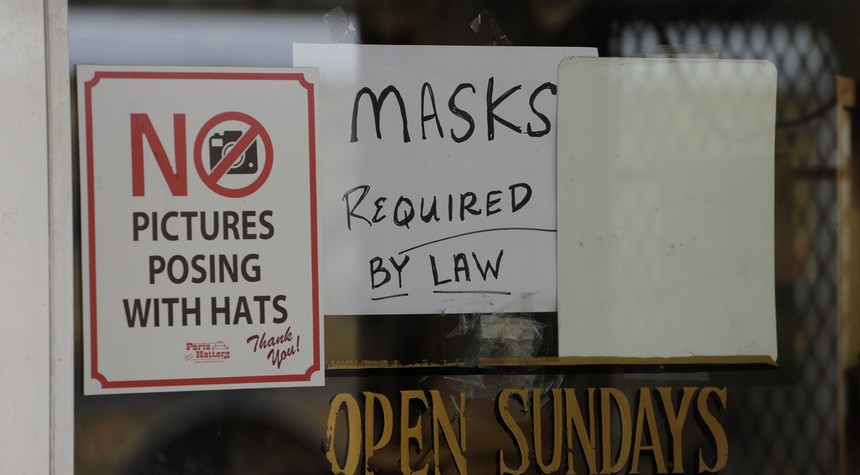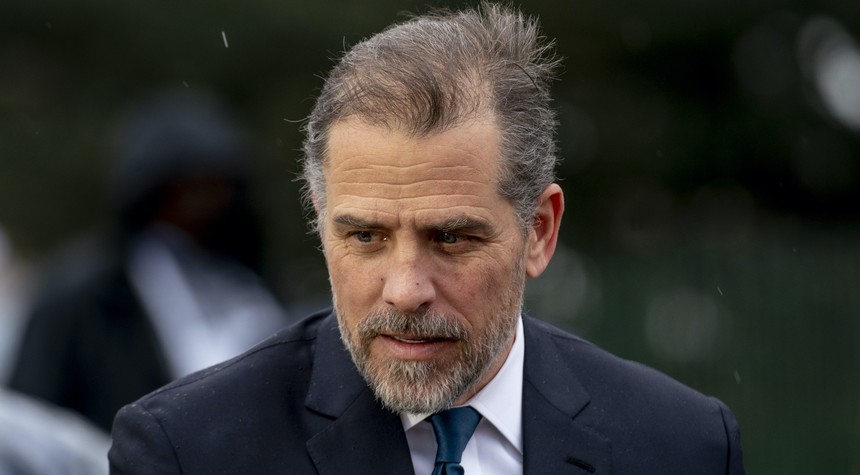I sympathize with Nina Jankowicz. I really do. Until a few days ago, the 33-year-old disinformationist had a plum job as executive director of the Department of Homeland Security’s now-“paused” Disinformation Governance Board.
What a great gig! Governing disinformation! In America! It’s every little girl’s dream come true.
And so, to have it snatched away . . . so quickly and so cruelly . . . what a shame.
How could such a calamity have befallen someone who, by many accounts, is a “renowned expert” in her chosen field? As Taylor Lorenz of the Washington Postreports, Jankowicz was “a victim of coordinated online attacks” from the nebulous yet omnipotent Right and the target of a “textbook disinformation campaign.”
What an irony! The disinfo czarina got disinfo’d!
Or did she? A Millennial who has lived the vast majority of her life online, Jankowicz’s pronunciamientos on Twitter and elsewhere, defenders such as Lorenz say, were taken “out of context.”
Did Jankowicz dismiss the New York Post’s Hunter Biden laptop story as a “Trump campaign product”? Well, sure. But the context was a hotly contested presidential election that she wanted Donald Trump to lose. And now that the New York Times and the Washington Post concede the controversial laptop was, in fact, Hunter Biden’s? Let’s talk about something else, like the “insurrection,” instead.
Did Jankowicz say that verified Twitter users should be allowed to “edit” other users’ tweets? Yes—to “add context,” of course.
Jankowicz leaned heavily on context in her post-resignation appearance on MSNBC on Wednesday. “To say that I am just a partisan actor was taken wildly out of context,” she told “All In” host Chris Hayes. Right. She’s also a singer. See! Context!
Fighting Disinformation—Or Peddling It?
It wasn’t just that the self-described “Mary Poppins of disinformation” is another cringeworthy Millennial clown—we’re stuck with them, alas. Jankowicz’s role running the new disinformation board was met with strenuous objections, many from civil liberties and human rights groups, not just from “the Right.” Her critics raised serious questions about her qualifications, her past work with the Ukrainian government, her thinking, her ideology, and the scope of her work with DHS. Though she and her family received death threats—which is obviously beyond the pale—the overarching response online and in print was part of a civilpublic discussion about whether the job she was hired to do should even exist.
Out of that discussion emerged two inescapable conclusions: Jankowicz is herself a peddler of partisan mis- and disinformation—the very thing she was hired to combat—and a Disinformation Governance Board where largely nameless, faceless bureaucrats decide what is “fact” and what is not has no place in an ostensibly free society.
In her tweets, cable news appearances, and her book on information warfare, Jankowicz reflexively assumes the Democratic Party line. January 6 was an “insurrection.” A group of Michigan men “planned to kidnap the Governor of Michigan”—a plot since exposed as a government entrapment exercise. Hunter Biden’s lucrative deal with Burisma in Ukraine might have looked like “corrupt activity,” but that’s only because Americans “do not have the time or volition to understand the details of Ukraine’s anti-corruption reforms since 2014”—and also, don’t forget, some of Donald Trump’s allies allegedly made dirty money in Ukraine, too.
But it’s her own work for Ukraine that deserved greater scrutiny. As a 2016-2017 Fulbright Clinton Public Policy Fellow, Jankowicz worked for StopFake, a U.S.- and George Soros-funded “anti-disinformation” group in Ukraine and a Facebook “fact-checking partner.” Arguably, StopFake is a pro-Ukraine propaganda organ. In 2017, Jankowicz hosted a StopFake video lauding the efforts of Ukraine’s “volunteer battalions,” which have a well-enumerated history of alleged war crimes. The most notorious, Azov, is an explicitly neo-Nazi outfit.
Jankowicz has not explained her work with StopFake. Now that she has resigned from the Disinformation Governance Board, she won’t have to.
Taylor Lorenz, a partisan in her own right, cites “experts” to paint the loud dissent directed toward Jankowicz and the board as “right-wing disinformation” that “regularly follow[s] the same playbook.” (This just in: The left-wing Nation magazine is now part of the “right-wing disinformation machine.”)
“Attacking faceless institutions is difficult, so a figurehead (almost always a woman or person of color) is found to serve as its face. Whether that person has actual power within that institution is often immaterial,” Lorenz writes. “By discrediting those made to represent institutions they seek to bring down, they discredit the institution itself.”
Although Lorenz’s characterizations are debatable at best, on one point she is correct: It was essential to “discredit the institution” because the institution should not exist.
Our Censorship Problem
The entire disinformation flap has embarrassed the Biden Administration, which went out of its way to distance itself from the censorship board. How do we know it was a censorship board? Because of the vehemence of official denials. “Neither Nina Jankowicz nor the board have anything to do with the censorship or removing content from anywhere,” Biden press secretary Karine Jean-Pierre told reporters Wednesday.
To be fair, Jankowicz, in the 2021 paperback edition of her book, How to Lose the Information War, never endorses outright censorship. That would have been stupid. Instead, she discusses the need for government to build “information guardrails.” Just as government regulation of automobile safety gave us seatbelts, airbags, and crumple zones, the argument goes, government regulation of social media would give users “unified rules of the road” in online discourse.
The trouble, obviously, is when the government defines the parameters of that discourse.
Jankowicz acknowledges as much. “How can any administration that intends to protect free speech censor the authentic opinions of its own citizens?” she asks. “Given what we know about the limited efficacy of fact-checking and the impossibly high levels of distrust toward institutions,” she continues, “how should a government, a newspaper, a social media platform, or a niece or nephew concerned for their crazy, conspiracy-loving uncle, approach attempts to inject discourse with a shot of truth?”
Her answer in the book revolves around securing election systems (just not the way Republicans propose), clamping down on foreign malefactors, and expanding “media literacy” programs.
“We should want our citizens to have the tools they need to navigate the fast-flowing rivers of information they encounter every day,” she writes. “We should want them to participate in the democratic process—but do it with facts, not fakes.”
The problem is, the government is not a disinterested party. Government is in the information business. It’s also in the disinformation business. Governments lie all the time. Then they lie about lying. Sometimes they lie to advance the national interest. And sometimes, they lie to cover up mistakes and crimes.
Answering a skeptical reporter’s question about the likelihood of a Russian “false-flag” operation ahead of the invasion of Ukraine, State Department spokesman Ned Price replied indignantly: “If you doubt the credibility of the U.S. government, of the British government, of other governments and want to, you know, find solace in the information that the Russians are putting out, that is for you to do.”
People’s memories may be short, but Afghanistan wasn’t that long ago. Neither was Iraq. Or, for that matter, Vietnam.
A responsible press would never take official pronouncements at face value. Yet, with certain exceptions, that’s exactly where the press and social media find themselves today
Who Are You Gonna Believe?
In the earliest days of the COVID-19 crisis, White House medical adviser Anthony Fauci believed he needed to lie to the public in 2020 about the efficacy of masks. Fauci later explained he lied to ensure that first-responders would have the personal protective equipment they needed.
Fauci has lied dozens of times, perhaps with the very best of intentions, or perhaps to cover his own rear. But the fact is, social media platforms have used Fauci’s official lies to stifle unofficial objections to pandemic policies and suppress content that later turned out to be 100 percent true.
Our corporate press made much of Donald Trump’s lies, exaggerations, and misstatements. By one popular account, Trump’s “untruths” topped 30,573 over the course of his four years in office.
So Trump’s lies threaten to unravel the fabric of democracy, but Fauci’s lies keep democracy properly stitched up? Trump’s lies are malicious, and Fauci’s lies noble? Is that the standard now? Or is it better to say that one faction doesn’t believe a word the spokesmen for the other faction says, and vice versa?
Back to Hunter Biden’s laptop for a moment. Recall that the New York Post in October 2020 had published an exclusive report detailing some of the contents of a laptop supposedly abandoned at a Delaware computer repair shop. The laptop’s hard drive reportedly included emails and text messages to and from Hunter Biden, discussing foreign business deals and alleged drug-fueled dalliances with prostitutes.
Just days after the Post article appeared, Politico on October 19 published a story headlined, “Hunter Biden story is Russian disinfo, dozens of former intel officials say.” Since most people only read and share headlines, the implication was clear: The Post story is bogus. The experts say so. Onward!
But Politico’s story was a bit more nuanced than the categorical headline suggested. Here’s the lead paragraph:
More than 50 former senior intelligence officials have signed on to a letter outlining their belief that the recent disclosure of emails allegedly belonging to Joe Biden’s son ‘has all the classic earmarks of a Russian information operation.’
And how did they know? Turns out, they didn’t.
While the letter’s signatories presented no new evidence, they said their national security experience had made them ‘deeply suspicious that the Russian government played a significant role in this case’ and cited several elements of the story that suggested the Kremlin’s hand at work.
In other words, it was speculation. A hunch. The “experts”—all of whom, incidentally, opposed Donald Trump’s reelection—didn’t have solid information. But that’s exactly how it was reported—and repeated uncritically by Nina Jankowicz, among others.
The fight, therefore, is about who controls information and how to make sense of facts that do not always conform to a particular set of narratives. A Disinformation Governance Board should not exist because it lacks the competence to do the job. More importantly, it lacks the trust of at least half the country to do the job impartially and without obvious political bias. I would no sooner welcome a disinformation board under an administration I favor than under one I oppose.
For the moment, the disinformation board is in a state of suspended animation. But don’t believe for a moment that it won’t be back in some form.
“We’re going to need another Nina down the road,” an anonymous Homeland Security staffer told Taylor Lorenz. “Anyone who takes that position is going to be vulnerable to a disinformation campaign or attack.”
And criticism and questioning, too, don’t forget. For as long as those things remain legal, anyway.













